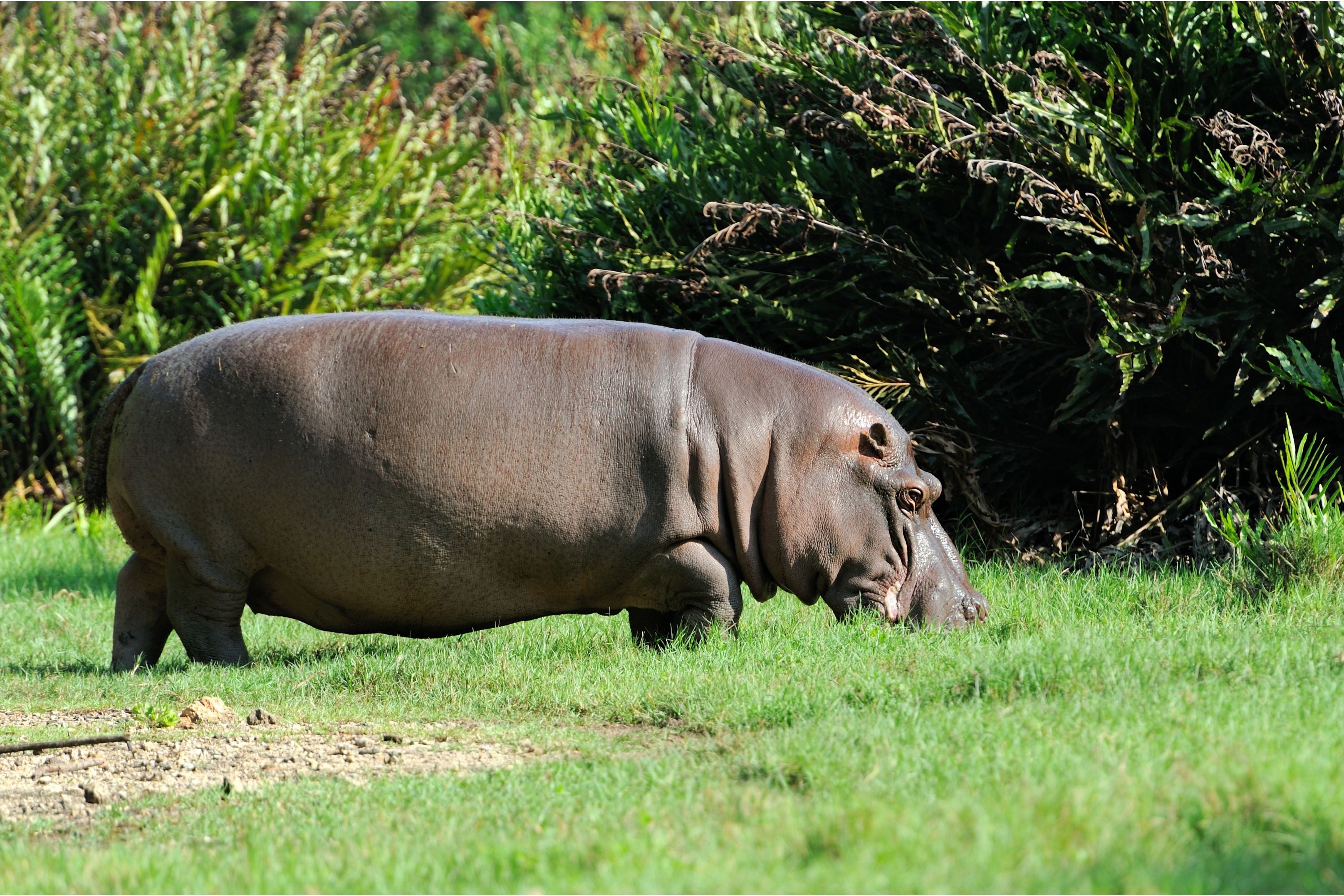Hippo
(Hippopotamus amphibius)

Description
The hippopotamus (Hippopotamus amphibius), also called the hippo, common hippopotamus or river hippopotamus, is a large, mostly herbivorous, semiaquatic mammal and ungulate native to sub-Saharan Africa. It is one of only two extant species in the family Hippopotamidae, the other being the pygmy hippopotamus (Choeropsis liberiensis or Hexaprotodon liberiensis). The name comes from the ancient Greek for "river horse". After the elephant and rhinoceros, the hippopotamus is the third-largest type of land mammal and is the heaviest extant land artiodactyl. Despite their physical resemblance to pigs and other terrestrial even-toed ungulates, the closest living relatives of the Hippopotamidae are cetaceans (whales, dolphins, porpoises, etc.), from which they diverged about 55 million years ago. Hippos are recognisable by their barrel-shaped torsos, wide-opening mouths revealing large canine tusks, nearly hairless bodies, columnar legs and large size; adults average 1,500 kg (3,310 lb) for bulls and 1,300 kg (2,870 lb) for cows. Despite its stocky shape and short legs, it is capable of running 30 km/h (19 mph) over short distances. The hippopotamus is a megaherbivore and is exceeded in size by elephants and some rhinoceros species among land animals. Mean adult weight is around 1,480 kg (3,260 lb) and 1,365 kg (3,010 lb) for bulls and cows respectively, Exceptionally large males have been recorded reaching 2,660 kg (5,860 lb). Male hippos appear to continue growing throughout their lives while females reach maximum weight at around age 25. The species has a typical head-body length of 3.3–3.45 m (10.8–11.3 ft) and an average standing height of 1.4 m (4.6 ft) at the shoulder. Hippos have barrel-shaped bodies with short tails and legs, and an hourglass shaped skull with a long muzzle. Their skeletal structures are graviportal, adapted to carrying their enormous weight, and their dense bones and centre of gravity allows them to sink and move along the bottom of the water. Hippopotamuses have small legs (relative to other megafauna) because the water in which they live reduces the weight burden. The pelvis rests at an angle of 45 degrees. Though they are bulky animals, hippos can gallop at 30 km/h (19 mph) on land but normally trot. They are incapable of jumping but do climb up steep banks.
Taxonomic tree:







